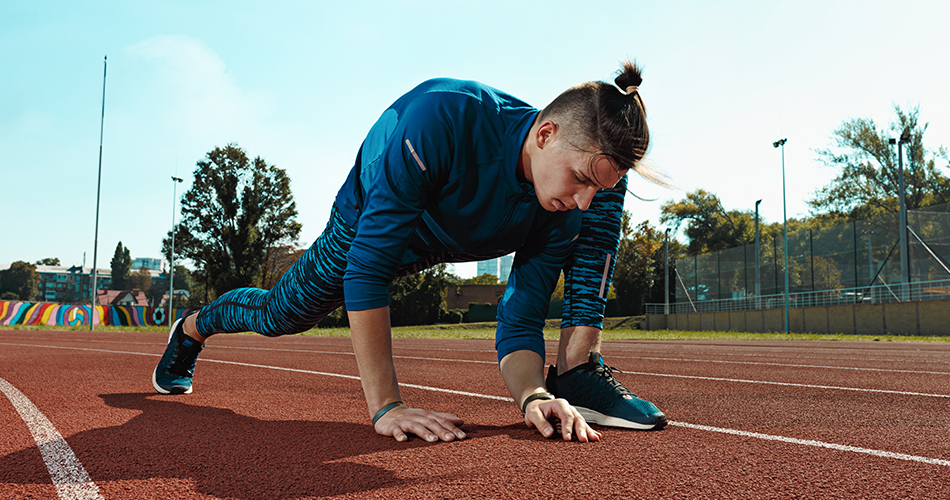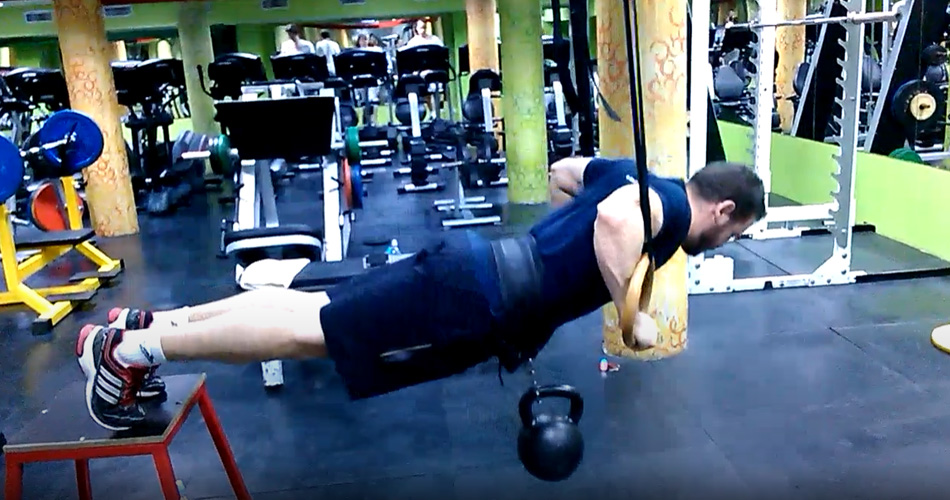Shoulder Mobility
“Shoulder pain is an important medical and socioeconomic problem in western society. […] Many lead to an inability to work and/or to carry out household and leisure-time activities.”
In my previous article, I wrote about the importance of t-spine mobility, whereby I also mentioned the increasing importance assigned to the role of breathing in upper (and lower) extremity mobility. This blog post will address the topic of shoulder mobility both in athletes as well as the general population, whereby shoulder mobility will be addressed in light of its close association with breathing mechanics and thoracic mobility. That is, the T-spine and the rib cage exert an important influence over the movement and position of the scapulae, while the latter effects the position of the humerus in the joint socket, potentially triggering a cascade of kinematic events, of which more will be described later in the post.
The topic of today’s post is one of the more complex issues in joint mobility, which is apt to the joint in question, as the shoulder is arguably the most complex joint in the human body. That is why we will first briefly touch on shoulder anatomy, discuss potential reasons for pain in the shoulder joint, range of motion (ROM), limitations and solutions.
We could say that the shoulder joint is the most complex joint in our body. We can imagine part of the joint as a golf ball on a tee. The golf ball is not exactly anchored to the tee, but that’s exactly why we can hit it in almost any direction. When speaking about the golf ball on a tee, what we have in mind is the glenohumeral joint or the ball and socket joint, yet this is not the only one making up the shoulder girdle, as another three joints are very important. The first one is the acromioclavicular joint, which at first glance could be integrated with the glenohumeral joint, followed by the sternoclavicular and scapulothoracic joint, respectively.
The glenohumeral joint or the ball on its tee is made up of the humeral head and the glenoid fossa (cavity) of the scapula. It is the most mobile and generally the least stable joint in the body.
The acromioclavicular joint attaches the clavicle to the scapula (more accurately: the acromion process and the lateral part of the clavicle), although it affords very little mobility.
The sternoclavicular joint attaches the axial skeleton to the upper limbs. It is made up of the medial aspect of the clavicle and the manubrium of the sternum.
The scapulothoracic joint, however, lacks the general characteristics of a joint, which is why we could say that it isn’t a real “anatomical” joint. As the name implies, the scapulothoracic joint connects the thorax and the scapula.
What all four joints have in common is that they are interspersed with an abundance of muscles and ligaments.
At first glance, the shoulder girdle seems quite well protected by the large deltoids, although it is in fact the muscles of the rotary cuff that provide the joint with the required protection and stability – infraspinatus, teres minor, subscapularis in supraspinatus (these also afford the joint to go through internal and external rotation).
Other important muscles of the shoulder girdle are muscles facilitating scapular motion (such as pectoralis minor, serratus anterior, levator scapulae, rhomboids etc.). As already mentioned in the introduction, the scapula influences the movement of the glenohumeral joint. Of course, the rotary cuff muscles and those mentioned above don’t include all muscles we could include when speaking about shoulder anatomy. There are other muscles that are directly connected to the joint, and others that indirectly influence the shoulder, its range of motion (ROM) and stability. The latter include breathing muscles, t-spine extensors, lumbar spine stabilizers and more, some of which we will come back to later in the post.
To summarize this anatomical conundrum: the shoulder girdle is made up of 4 joints, it is the most mobile joint and requires the greatest level of stability amongst all the joints and is surrounded by an abundance of muscles and ligaments. It is exactly the complexity of this “puzzle” that means there are many possible causes for pain or reduced ROM in the shoulder joint.
Common sites of injury occur at the rotary cuff, the bicep tendon, the labrum or the capsule; there could also be cystic changes, lesions, nerve issues etc. In many cases, pain in the shoulder is a concurrence of several factors and even medical practitioners often find it hard to pinpoint the problem and set an accurate diagnosis.
As coaches, we can aid ourselves with movement and postural screens and assessments to inform our diagnosis, together with collecting verbal and written feedback from our clients.
In many cases we can observe a specific repeated pattern (either desk jockey posture or a specific sport), that serves as the underlying cause for anatomical adaptations.
In professional athletes, we often see large asymmetries (remember that we all have asymmetries and every asymmetry should not be a cause for concern). In volleyball players, for instance studies found significant differences in power and mobility of the shoulder girdle between the dominant and non-dominant arm (Wang et al., 2000). The researchers found that most players (albeit in a statistically small sample of players) had lower ROM, particularly internal rotation, in the dominant arm compared to the non-dominant limb, as well as functional weakness in external rotators. According to the researchers, these also serve as intrinsic risk factors and may relate to shoulder overuse injuries.
In the general population, there is a prevalence of the so-called desk jockey posture, where the humerus is internally rotated, while the scapula is protracted. The posture itself isn’t necessarily the cause of pain, although it can manifest in pain if not counterbalanced with physical activity. The manifestation of pain is even more probable in those individuals who like to hit the gym for an intense workout or the tennis court after work. Normally, this population has tighter pecs, smaller ROM, weaker superior posterior muscles, and weak joint stabilizers. Consequently, there is a higher incidence of injury when these individuals dive into intense exercise without appropriate preparation.
The gym rats described above, along with many others, commonly present with poor mobility of the thoracic spine (link to previous post). Lack of extension in the thoracic spine may lead to altered posture, gait and inhibited movement of the scapula, where the scapula lacks the ability to retract and depress. “An alteration in scapular positioning or motion can make it difficult to move your arm, especially when performing overhead activities, and may cause your shoulder to feel weak. An alteration can also lead to injury if the normal ball-and-socket alignment of your shoulder joint is not maintained.” (Sciascia & Kibler, 2017). Good scapular mobility, on the other hand, constitutes the foundation for the glenohumeral joint to move.
Also tightly associated with thoracic spine mobility are anterior core control and breathing mechanics. The rib cage interacts with the thoracic spine and a strong anterior core allows for better thoracic spine extension (extension is therefore not achieved on account of the lumbar spine), with the T-spine facilitating free movement of the scaps. The scapula dictates where the humerus can go and the humerus delivers the rest of the arm, which in turn dictates where the hand goes. If we have a weak anterior core, extension could be driven from the lumbar spine, making the t-spine less mobile, the scapula would be elevated further and the humerus would have a harder job externally rotating.
Bill Hartman is one of the practitioners highlighting the importance of thoracic mobility from a slightly different aspect. His stance is that mobility of the thoracic spine affects the strength of the lower trapezius (the lower traps are upward rotators of the scapula). If they are weak, then the upward rotation of the scapula is limited and consequently this narrows the subacromial space. If this is narrowed, it is more likely that your rotator cuff will get pinched, i.e. impingement is more likely to occur). In fact, one of the most common causes of shoulder pain in primary case are reported to be rotator cuff disorders (Cadogan et al., 2011).
So how can we address shoulder girdle problems as coaches? As already mentioned, it is important to gain as much information on the athlete’s condition as possible (diagnosis, movement screen, postural assessment, (non)verbal feedback, range of motion, noticeable compensation, asymmetries, etc.). Based on the obtained information we can begin to design our training plan, with training outcomes often improved when delivered alongside manual therapy, physical therapy and massage. We can achieve small wins even by introducing specific breathing drills in our training programs, as optimized breathing patterns soon lead to improved joint range of motion. Functional range conditioning (FRC) methods are another way to improve active range of motion. An important segment of the training program should incorporate breathing drills to facilitate avoiding certain compensation in training, improve T-spine mobility and cervical spine positioning. If we dive a little deeper on the intricacies of the training program, we would emphasize the importance of stabilization of the shoulder girdle, which means including exercises strengthening the rotator cuff in our training plan. As we know that scapular mobility is important, and we often observe poor upward rotation of the scapula, the training plan should also focus on strengthening muscles stabilizing and upwardly rotating the scapula. When observing scapular motion, we can see different patterns where the scaps sometimes come into excessive retraction, meaning that soft tissue work is required coupled with activation of the serratus anterior, while the inverse situation is also commonly observed, with a excessive protraction of the scaps, in which case more lower trap work may be needed).
Exercise Selection
There are countless exercises targeting the shoulder joint, particularly if we take into account all of the possible disfunctions and causes for inhibition of shoulder mobility or pain. My video series has focused on shoulder flexion, as most of my clients exhibit poor mobility and activation particularly in this range of motion. I have also added rotation of the shoulder girdle, some stabilizing exercises for the rotary cuff using a Kettlebell, and a short shoulder mobility combo, which can also be used as a warmup.
1. Shoulder Flexion
Supine shoulder flexion











Responses